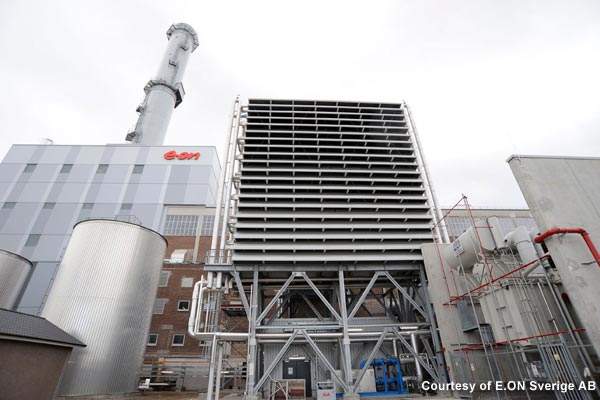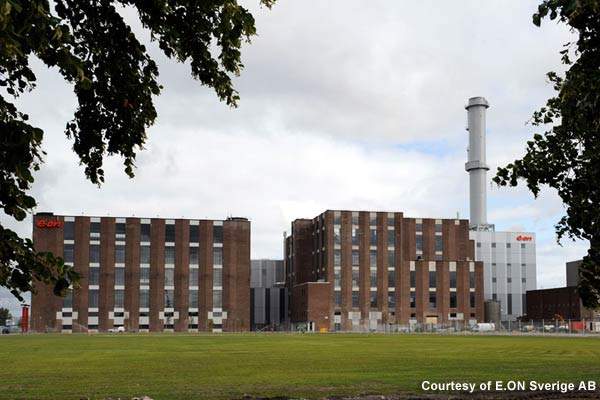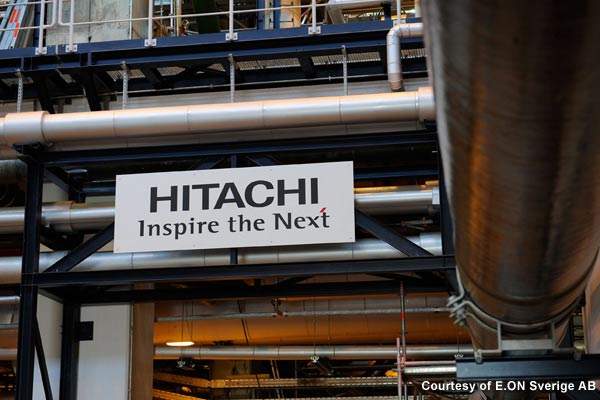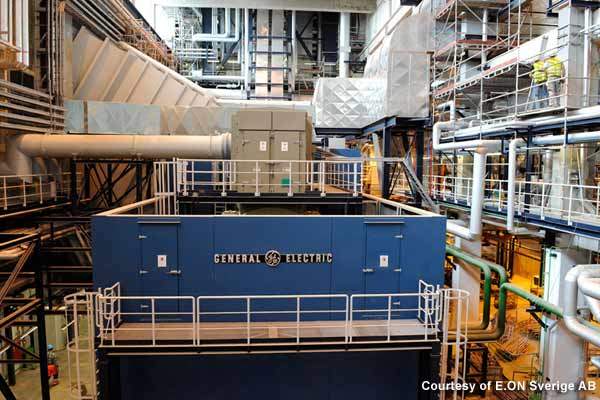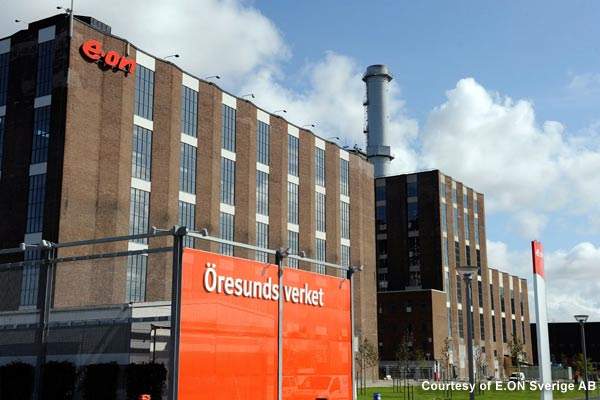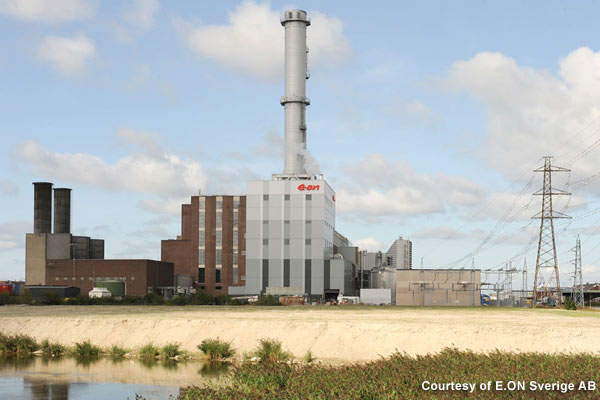The Öresundsverket combined heat and power (CHP) plant in Malmö, Sweden, was opened on 31 August 2009. Owned by E.ON Sverige, the SEK3bn (about €300m) natural gas-fired plant is one of the most efficient power plants in Europe.
The Öresund plant has the capacity to produce 440MW of electricity and 250MW of heat. The initial efficiency of the plant is 58%; at full cogeneration it will have the potential to reach about 90% efficiency.
The technologically advanced plant will meet the electricity requirements in the southern part of Sweden, partly compensating for the closure of Barsebäck nuclear plant.
The CHP plant has been designed to operate for about 7,000 hours annually and will produce three billion kWh (3TWh) of electricity for southern Swedish markets and about one billion kWh (1TWh) of district heat to meet 40% of the city of Malmö’s heating needs through the district heating network. The coal-fired energy generation system in northern Europe will be replaced by electricity from the Öresundsverket plant, decreasing CO² emissions by about one million tonnes per year.
Plant history
The 50-year old Öresundsverket has had three power plants built in different phases in the industrial harbour of Malmö. Sydkraft, acquired by E.ON, had constructed the coal and oil-fired plants between 1953 and 1964. Plant 1 was operational until the beginning of the 1970s and generated about 160MW of electricity. Plants 2 and 3 produced 70MW and 160MW of electricity respectively. They also had a provision of producing district heat of about 150MW for Malmö.
However, Öresundsverket terminated its operations in 1993 despite many upgrades and modernisation works. Construction of the new Öresundsverket CHP plant, demolishing the equipment of the existing plants, began in late 2006.
Project finance
E.ON Sverige has invested €300m in the Öresundsverket plant for modernisation and infrastructure. The investment includes about €220m of new equipment for the power station and about €25m for a new cooling water system.
Turnkey process
In 2006, a turnkey contract was signed with the consortium Hitachi Power Europe (former Deutsche Babcock) and General Electric (GE) for about €220m to build the E.ON CHP plant. Hitachi was responsible for the plant design, providing equipment and overall construction planning and implementation. GE, along with its subsupplier Alstom, supplied the powertrain consisting of a steam turbine, a gas turbine and a boiler including instrumentation and control.
Construction
The total renovation and modernisation of Öresundsverket has been a challenge and about 45 companies were involved in the project.
The main challenge was to integrate the gas turbine, steam turbine sets and heat recovery boiler into the existing building. The GE gas turbine was transported from France and was installed at Öresundsverket in 2007. The 330t, 12m-long and 5m-diameter gas turbine has the capacity to produce 290MW.
Lodab was involved in the demolition of the previous plant’s equipment. The other companies involved in the project include August Prien for civil constructions, Borgel for façades and roof development, FMT for the installation of gas and steam turbines and generators, Koch de Portugal for erection of the steam boiler and balance of the plant, Caverion for ventilation, Cegelec for electricity installation and ISS Landscaping for ground and road work.
Abersfelder provided the reservoirs, Hertel was involved in painting and providing insulation for the plant and Veolia for water treatment. Construction company PEAB was the contractor for building the cooling water system.
Plant make-up
The production facility’s main components include one GE gas turbine type 9 FB, a vertical triple-pressure heat recovery steam generator (HRSG) located behind the gas turbine, a condensing extracting steam turbine and auxiliary equipment. The main components have a multi-shaft arrangement and the turbines have their own generators with main equipment erected in-line.
The HRSG, equipped with selective catalytic reduction system of aqueous ammonia, reduces the nitric oxide (NOX) emissions to about 15mg/MJ fuel.
Technology
The new Öresundsverket CHP plant will produce electricity and district heating by burning natural gas under high pressure in the combustion chamber of the gas turbine.
The three-casing steam turbine consists of a high and intermediate pressure part and a double-flow low-pressure part connected with one pass condenser.
The gas turbine will generate about 293MW of electricity output during condensing operation mode of the total 447MW from the power plant. The operation will consume about 767MJ/s of heat, resulting in an electrical efficiency of 58.3%.
Gases formed in the turbine are used to drive the turbine shaft connected to an electric generator and also to heat up the water to produce steam and create boiler pressure.
The hot flue gases from the gas turbine also heat up the water to generate 310t/h of live steam and create boiler pressure in the HRSG. The steam is used to operate the steam turbine and generate about 161MW of electrical power output.
Heat from the steam produced during the process is exchanged over Malmö’s district heating water. The water, when cooled, is circulated back to the plant for reheating. During low demand for district heat, the steam is used to generate electricity.
The gas turbine generator is cooled with hydrogen water for its power output of about 281MW in ISO conditions. A condenser connected with titanium tubes uses sea water for cooling.
The plant’s distributed control system (DCS) is highly automated and requires just one operator to control the entire CHP plant. The DCS links the GE Mk VI system that controls and monitors the gas turbine and its generator.
Local environmental impact
The Öresundsverket plant is designed with advanced combustion technology to minimise the emission of harmful gases. The natural gas-fired power plant reduces carbon dioxide emissions by half in comparison to a coal-fired power plant. The flue gases are released only after the best possible utilisation.
E.ON gas will use an 8km branch line from Öresundsverket to the main grid in southern Sweden for the supply of natural gas to the plant. The steel pipes are pressure tested, have protective plastic coating and are electronically monitored. The route of the line has been selected to reduce the impact and interference on the local habitat.

